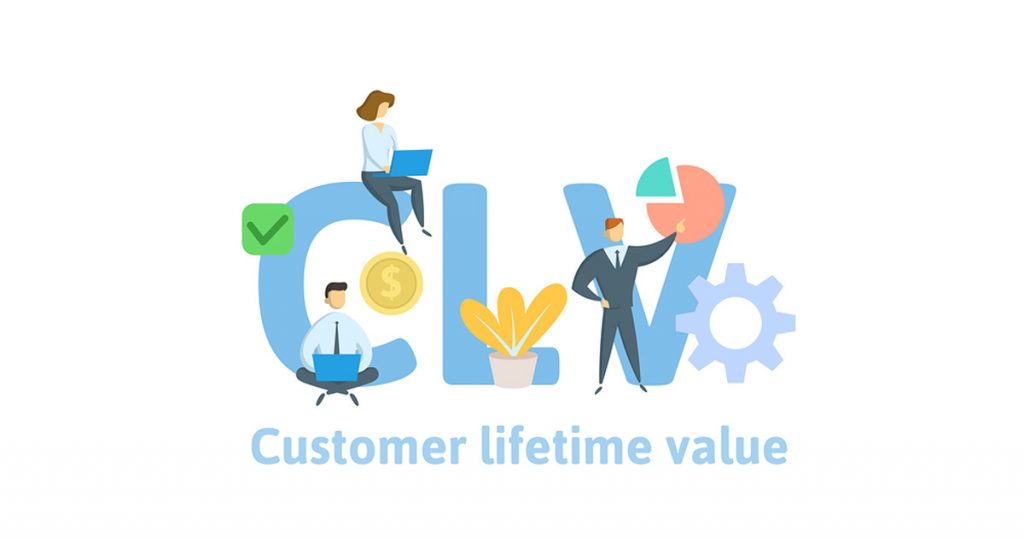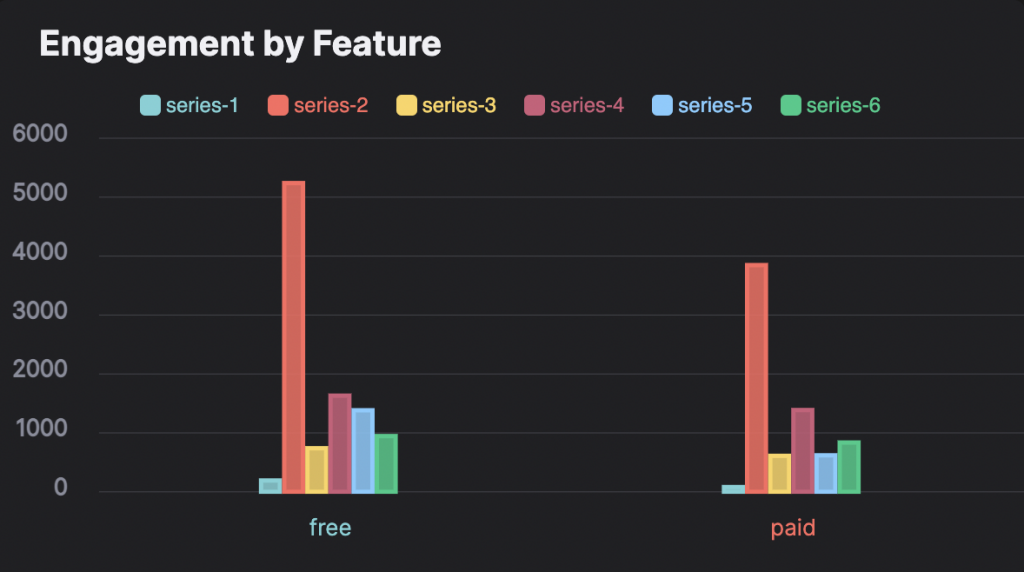Top 7 Product Management KPIs
The product manager is the person who prepares a roadmap for the successful launch of the product produced in the company he works for, manages the marketing process of the product, and works to maximize the profit of the company from that product. As stated by 280 Group in its report, a qualified product manager can increase the company’s revenues by up to 34.2%. However, nearly 50% of companies do not have a consistent product management process.
For a more consistent product management process, KPIs and metrics are the biggest helpers of product managers that facilitate their work in the decision-making process and provide a clear path. KPIs measure the product’s success and contribute to the prioritization of the process. For this reason, a good product manager should make effective use of KPIs in the decision-making mechanism.
Continue reading to learn about the 8 KPIs that will work best for you in product management.
Contraction Rate
Contraction rate is a KPI that shows the decrease in revenue from your current users. That is because primarily, users downgrade or cancel their packages.
Why is the contraction rate important?
Contraction rate is crucial because it directly negatively affects your MRR. Also, the higher your contraction rate, the less satisfied your users are with the product they use or the purchase they make. Therefore, keeping the contraction rate under control is essential for a healthy SaaS company.
Expansion Rate
The expansion rate is essential for every SaaS company and a KPI that shows how your company’s MRR increases month to month. This increase may be due to various reasons. For example, your users may have upgraded to a more expensive version of your product or upgraded from the free version to the paid version. Upselling like this increases your expansion rate. In addition, the cross-sells you perform, and the add-ons purchased by your users also contribute to the increase in the expansion rate.
How to calculate the expansion rate?
This KPI is shown by comparing your MRR rates for last month with this month and expressed as a percentage. The expansion ratio formula is as follows:
[(The expansion rate of the current month – Expansion rate of the previous month) / Expansion rate of the last month] * 100
Why is the expansion rate significant?
The expansion rate is directly related to the loyalty and satisfaction of your users, as it allows you to follow the revenue growth of your existing users. In addition, the expansion rate helps you balance your customer acquisition cost (CAC). It also enables you to identify the users who bring the most value to your SaaS company by tracking your increased hash and cross-sells. In other words, with this KPI, you can determine your loyal and high lifetime users and draw an ideal user profile.
How to increase the expansion rate?
The primary way to increase the expansion rate is to increase your upselling and cross-selling. While your rate of making an extra sale with people you already have is between 60% and 70%, the probability of making a sale to a new user is between 5% and 20%. For this reason, it will be helpful to focus on increasing your expansion rate by making sales with the new offers you offer to your users who are actively using your product. In addition, analyzing what your customers want and focusing on developing your product in line with these demands will increase your expansion rate due to new purchases.
Churn rate

The Churn rate is a KPI that expresses the proportion of people who quit doing business with your company, including users who cancel or fail to renew their subscription. The lower your Churn ratio, the better because this KPI shows that you’ve managed to retain more users.
How to calculate the churn rate?
The formula for the Churn ratio is as follows:
Customer Churn Rate = (Lost Customers ÷ Total Customers at the Start of Period) x 100
Why is the churn rate important?
Acquiring a new user costs seven times more than attracting an existing user to your company. Therefore, keeping your churn rates under control affects your profit growth directly. In addition, measuring your churn rate helps you observe the effect of your marketing campaigns and get an idea about your customer satisfaction.
How to decrease the churn rate?
A high churn rate can have many causes. Therefore, you should first analyze your user base well to reduce your churn rate. You can learn about this by surveying your users who have stopped using your product. One of the main reasons users stop using your product is because your product is not clear enough. It is pretty understandable for users to cancel the purchase of a product that they have difficulty using or do not understand its features. Therefore, having advanced resources and good customer support will have a lowering effect on your churn rate.
Another reason why your churn rate is high is because you may be running marketing and sales campaigns aimed at the wrong audience. For this reason, make sure that your target audience and the user groups that will benefit from your product match significantly if your churn rate is increasing.
Active Users

Active users interact with your product within a certain period. How a user counts as an active user depends on the features of your product and the criteria you set. You can determine these criteria as making a specific purchase, visiting a particular website, or using a particular feature.
How to calculate the active users?
Calculating your number of active users is relatively easy. All you have to do is determine the criteria for a user to be counted as an active user and count the users who fulfill this criterion in the specified period.
Why are the active users important?
Active users have a direct impact on revenue. Therefore, the excess of active users is an important indicator of success for a company. In addition, observing that active users increase over a while is a sign that your sales and marketing strategies were effective. In addition, active users play a direct role in calculating critical KPIs, such as stickiness, that product managers should consider when making decisions. Therefore, knowing the number of active users is essential for calculating other KPIs or measuring their impact.
Generally, active users are measured over three different periods:
- Daily Active Users (DAU)
- Weekly Active Users (WAU)
- Monthly Active Users (MAU)
How to increase the number of active users?
The best way to increase your active user count is to streamline your user onboarding process. A good onboarding process ensures that your users are familiar with the features of your product and therefore use these features more actively. You can decide what kind of onboarding will be more effective for your product by performing various A/B tests.
In addition to onboarding, informing your users of new features of the product or recent updates to the part will also increase your users’ awareness of your product. That will allow your users to interact more actively with your product.
Lifetime Value

Lifetime value (LTV) or customer lifetime value (CLV) is a KPI that represents the revenue a user will generate for your company during their stay as your user. This metric is critical because it allows you to predict how much money you will receive from your users in return for your investment.
How to calculate the lifetime value?
In its simplest form, the LTV formula is as follows:
Lİfetime Value = (Average Purchase Value) x (Average Purchase Frequency Rate)
Of course, much more indicators are needed for the most accurate lifetime value estimates. You can use various AI algorithms to calculate LTVs with more complex formulas.
Why is the lifetime value important?
LTV allows you to focus on a long-term connection with your users rather than a one-time connection. That will enable you to see whether you can establish a good and correct relationship with your market and develop a strategy accordingly. Also, with LTV, you can predict when your customers will be able to give you a profit the way you want. Sometimes, although some users may not seem very profitable in the short term, they may cause a much larger profit return than you think in the long run. You can be aware of these users by paying attention to the LTV KPI. So you can predict which customers would be better off investing more than others.
How to improve the lifetime value?
If you want to increase your LTV, your user onboarding is the first and most essential thing to consider. Onboarding is of great importance for LTV, especially in SaaS companies, as it is for active users. When you greet users with an excellent first impression, you will increase your LTV and increase the likelihood of your up-selling or cross-selling. Thus, if your users bring you less profit than you expect, they learn your product challenging and in a long time.
Another factor that will increase your lifetime value is to provide a personalized experience to your users. Analyze which filters your users are using, which products they are interested in, and which product they are likely interested in. In this way, you can make your marketing strategies for users more personal. For example, you can run a more personalized email marketing for your users with this data.
Retention Rate

Contrary to the churn rate, the retention rate indicates the number of users who still benefit from your product at a specific time and the number of users you retain. Since SaaS is subscription-based, the retention rate is a critical success indicator for SaaS companies.
How to calculate the retention rate?
The customer retention rate formula is as follows:

Why is the retention rate important?
The increase in your retention rate directly impacts your revenue because retaining an existing user is much easier and less costly than acquiring a new user. In addition, those who have used your product for a certain period are the users who trust your product the most. Therefore, they are more likely than new users to make a new purchase.
How to increase retention rate?
Retention and churn ratios are the opposite of each other, so they complement each other. Therefore, in order to increase your retention rate, you must first understand the reasons for your churn rate. If you analyze why and after how long your users leave your product, you can draw a retention strategy based on this analysis. In addition, for a high retention rate, it is very important to consider the opinions of your users. If you take into account the feedback of your users and shape your product according to these feedbacks, this will increase the loyalty of your users.
Stickiness
Stickiness is an important measure in product management and is used to identify how often your users actively use your product. This metric is more effective on the activity of your users than the active user metric alone, because it helps you determine how many of your monthly active users are using your product actively on a daily basis.
How to calculate the stickiness?
Stickiness is calculated by dividing your daily active users by your monthly active users. The formula is as follows:

Why is stickiness important?
The higher the stickiness ratio, the higher the user satisfaction, because the most active users of your product are the users who are most satisfied with your product. User satisfaction also increases the likelihood of your users making extra purchases. Also, a high stickiness rate is an indicator of the success of a SaaS company.
How to increase stickiness?
Stickiness rate is directly related to active user rate. For this reason, any activity that will increase the active user rate will also be effective in increasing the stickiness rate.
Feature Engagement Rate

Feature engagement is a KPI that helps you understand how well users adopt and interact with your product’s features. You can determine which product elements add more value to your users and which features your users interact with less than you expected.
How to calculate the feature engagement rate?
The most basic way to increase feature engagement for your SaaS product is to increase feature adoption. The feature adoption funnel consists of four stages:
- Exposed: This is the stage where your users are aware of a new feature of your product. Even if your users have not used this feature yet, they are aware of the existence of such a feature.
- Activated: At this stage, your users interact with the feature.
- Used: This is the stage where your users use the feature for the first time.
- Used Again: This is when your users use the feature repeatedly. In other words, at this stage, your users have adapted to this feature.
Why is the feature engagement rate important?
Feature engagement KPI is significant for SaaS companies. First of all, thanks to this KPI, you can determine which feature your user’s value and which feature they do not use much. In this way, you can create a marketing plan to highlight your new features.
Your users’ engagement with features is essential when adding new features or updating your product. Based on the features that users interact with the most, it will be easier for you to determine which new features would be better for you to add. Likewise, identifying which parts don’t appeal to your users will inform you which features you should spend more time developing in a product update.
How to increase the feature engagement rate?
As with other product management KPIs, a good onboarding experience is essential in increasing the feature engagement rate. It is also necessary to notify users of new feature add-ons and feature updates through various channels. In this way, your users will easily be aware of the changes in the features of your product, and the probability of using these features will increase.
Conclusion
Especially in a dynamic industry like SaaS, product managers need KPIs to make effective decisions to accelerate business growth. In addition, if all these KPIs are evaluated alone, they may not give a sufficiently effective result. For this reason, product managers should also monitor the compatibility of all these KPIs and determine their strategies accordingly.
Analyzing all these KPIs and their impact on each other and your SaaS company can be a tedious process. But with an accurate and effective analytics platform like Hockeystack, this process will become much less complicated and more efficient.
FAQ
Project management and product management are two professions that complement each other but are different from each other. The product manager sets the vision for the product and makes more strategic decisions about what needs to be done. In addition, the project manager takes more tactical decisions to ensure that these requirements are met within the budget, according to the vision set by the product manager.
The product manager sets the vision for a product at the idea stage, creates marketing and sales campaigns strategies, and manages the process until the targeted success is achieved.




